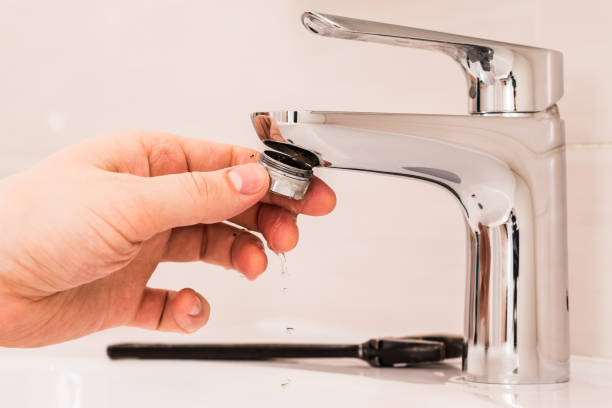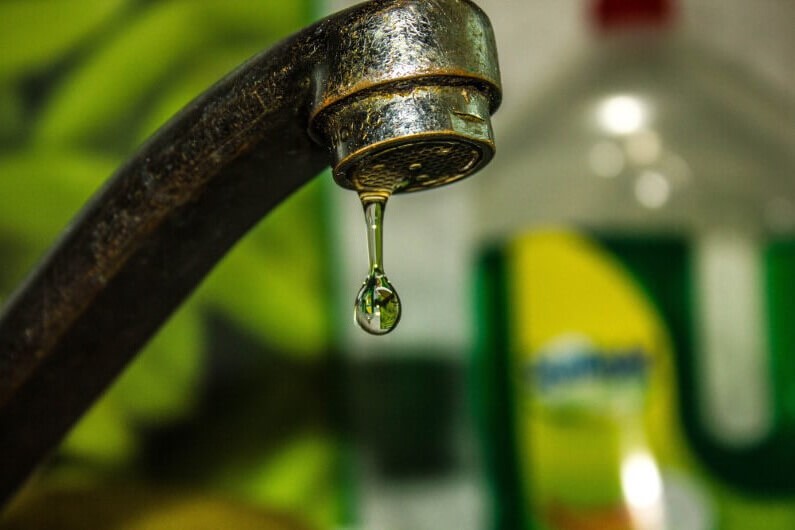Our Explanations Behind Dealing with a Broken Faucet
Our Explanations Behind Dealing with a Broken Faucet
Blog Article
What're your thoughts on How to Fix a Dripping or Leaky Faucet ?

Leaking taps may look like a minor trouble, however their effect surpasses simply the annoyance of the audio. From wasting water to sustaining unneeded economic prices and health dangers, ignoring a dripping tap can cause numerous repercussions. In this article, we'll delve into why it's critical to address this common family issue quickly and effectively.
Wastage of Water
Environmental Effect
Dripping faucets contribute dramatically to water waste. According to the Environmental Protection Agency (EPA), a solitary faucet trickling at one drip per second can throw away more than 3,000 gallons of water each year. This not only stress water resources yet likewise impacts environments and wildlife based on them.
Step-by-Step Guide to Fixing a Dripping Faucet
Tools Needed
Before trying to fix a leaking tap, gather the necessary tools, consisting of an adjustable wrench, screwdrivers, substitute components (such as washing machines or cartridges), and plumber's tape.
Common Tap Issues and Their Solutions
Recognize the sort of faucet and the details issue causing the drip. Usual troubles consist of worn-out washers, corroded valve seats, or faulty O-rings. Describe supplier directions or on-line tutorials for step-by-step advice on fixings.
Financial Costs
Raised Water Bills
Beyond the environmental impact, trickling taps can inflate water bills considerably. The built up wastefulness over time converts into greater utility expenses, which might have been prevented with timely repairs.
Potential Property Damage
Additionally, prolonged leaking can lead to damage to components and surfaces surrounding the tap. Water accumulation can create discoloration, rust, and also structural problems if left neglected, leading to added repair prices.
Wellness Concerns
Mold And Mildew and Mold Development
The continuous existence of wetness from a dripping tap creates an excellent setting for mold and mold growth. These fungis not only jeopardize interior air quality yet additionally position health and wellness risks, particularly for individuals with respiratory system problems or allergic reactions.
Waterborne Illness
Stagnant water in dripping taps can end up being a breeding ground for bacteria and other pathogens, enhancing the risk of waterborne diseases. Pollutants such as Legionella bacteria thrive in stagnant water, possibly bring about significant health problems when consumed or breathed in.
Do it yourself vs. Expert Repair
Pros and Cons of Do It Yourself Repair Work
While some may attempt to repair a trickling tap themselves, DIY repair work include their very own set of difficulties. Without proper expertise and tools, DIY efforts can aggravate the issue or bring about insufficient repair work, extending the trouble.
Advantages of Working With a Specialist Plumber
Hiring an expert plumber makes certain that the underlying root cause of the dripping faucet is attended to efficiently. Plumbing professionals have the proficiency and tools to detect and fix tap problems effectively, conserving time and minimizing the risk of more damage.
Environmental Duty
Specific Payment to Preservation
Taking duty for repairing trickling faucets straightens with broader efforts towards water conservation and ecological sustainability. Every individual's activities jointly make a considerable influence on preserving priceless sources.
Lasting Living Practices
By prioritizing punctual repair services and embracing water-saving behaviors, people add to lasting living methods that profit both present and future generations.
Safety nets
Normal Maintenance Tips
To avoid leaking taps, execute regular upkeep such as cleaning up aerators, inspecting for leakages, and replacing worn-out parts promptly. Furthermore, think about mounting water-saving tools or upgrading to much more efficient fixtures.
Importance of Prompt Fixes
Addressing dripping faucets as quickly as they're seen prevents further water waste and prospective damage, eventually conserving both water and money over time.
Effect On Home Value
Understanding of Well-Maintained Home
Preserving a building in good condition, consisting of attending to maintenance concerns like trickling faucets, boosts its viewed value and desirability amongst prospective buyers or lessees.
Influence on Resale Value
Properties with well-maintained plumbing fixtures, consisting of taps, command greater resale worths in the property market. Dealing with dripping faucets can add to a positive perception throughout building inspections and arrangements.
Conclusion
Addressing a leaking faucet surpasses plain convenience; it's a vital action towards saving water, lowering financial costs, and safeguarding health and residential property. Whether with DIY repair work or expert assistance, doing something about it to repair trickling taps is a tiny yet impactful method to advertise liable stewardship of resources and contribute to a much healthier, much more sustainable future.
Most Common Reasons for a Leaky Faucet and How to Stop the Drip
Whether it’s your kitchen faucet leaking or a bathroom faucet leaking, one leaky faucet can waste anywhere from three to 30 gallons of water every single day. If the constant drip-drip-drip doesn’t get your attention, your water bill will. The good news is that, by following a few simple steps, chances are pretty good you can fix the problem yourself.
Why is it dripping?
Before you start taking things apart, let’s break down some of the most common causes of a leaky faucet.
Bad O-ring.
A cartridge is a valve that controls the flow of water into the faucet spout. On cartridge faucets there’s an O-ring—the little disc attached to the stem screw that holds the faucet handle in place. If it’s loose or worn-out, it can cause your sink handle to leak. Of course, the cartridge itself could be worn out. If that’s the case, make sure you replace it with the exact same kind.
Corroded valve seat.
The valve seat connects the faucet and the spout. If the leak seems to be coming from the spout, it might be because a buildup of water sediment has corroded the valve seat.
Worn-out washers or seals.
A leaky spout could be caused by a bad washer that rests against the valve seat. It’s just a matter of time before friction takes its toll. It could also be the wrong size washer or one that’s been installed incorrectly. Water sediments can also corrode inlet and outlet seals.
Water pressure.
If the faucet only drips now and then, or when you turn the handles a certain way, you should probably check your home’s water pressure.
Loose or broken parts.
The adjusting ring and packing nuts in the stream screw can become loose over time, causing your sink handle to leak. Try tightening or replacing the packing nut. If the leak is coming from the pipes underneath the sink, you probably have a broken pipe or fitting. If that’s the case, you should definitely call a plumber.
Know your faucet.
Faucets come in a variety of types. Each one has its own assembly—and its own possible causes of leaks. Learning about the four most common kinds of faucets will help you know how to take them apart and make any repairs.
How to stop a leaky faucet
Fixing that leaky faucet doesn’t have to take a lot of time, money, or expertise. It’s usually a simple matter of replacing a worn-out washer or gasket, a loose O ring, or another part. Chances are really good you can do this yourself if you follow these simple steps.
Shut off the water.
Before you tackle the faucet, cut off the water supply to the sink. There should be one valve for hot and one for cold. Hand-turn them clockwise with your hands till they close. If there are no valves under the sink, head to the basement and shut off the main water supply to the house. Then turn on the faucet until it empties out the water that’s still in the line and you’re ready to start. It’s a good idea to cover the sink drain with a plug or a rag so you don’t lose any small pieces and parts while you’re working.

As a serious reader on Why It's Important to Fix Leaky Faucets, I thought sharing that excerpt was smart. Do you know about anybody else who is excited about Why It's Important to Fix Leaky Faucets? Do not hesitate to promote it. I treasure your readership.
Report this page